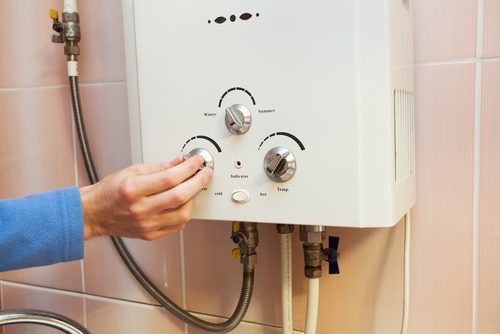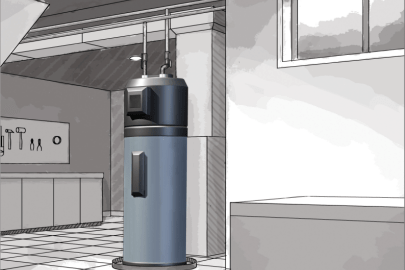Steps to Prolong the Lifespan of Your Home's Hot Water System Through Maintenance
Steps to Prolong the Lifespan of Your Home's Hot Water System Through Maintenance
Blog Article
How do you actually feel on the subject of How to Maintain a Hot Water Heater in a Few Simple Steps?

Warm water is important for daily comfort, whether it's for a revitalizing shower or cleaning dishes. To guarantee your hot water system runs successfully and lasts much longer, regular maintenance is vital. This post offers sensible ideas and insights on just how to preserve your home's hot water system to stay clear of disruptions and pricey repair work.
Intro
Preserving your home's warm water system might appear difficult, but with a couple of easy steps, you can guarantee it runs efficiently for many years to come. This guide covers whatever from understanding your warm water system to DIY upkeep tips and recognizing when to contact professional assistance.
Importance of Preserving Your Hot Water System
Normal maintenance not just extends the life-span of your hot water system however also ensures it operates successfully. Overlooking upkeep can lead to reduced performance, greater energy expenses, and also premature failure of the system.
Indicators Your Hot Water System Requirements Maintenance
Recognizing when your hot water system requires focus can avoid significant concerns. Look out for indications such as inconsistent water temperature level, strange noises from the heating system, or rustic water.
Recognizing Your Warm Water System
Before diving into maintenance jobs, it's useful to understand the fundamental parts of your hot water system. Commonly, this includes the water heater itself, pipes, anode poles, and temperature controls.
Monthly Maintenance Tasks
Regular regular monthly checks can assist catch minor issues before they escalate.
Flushing the Water Heater
Flushing your water heater eliminates debris build-up, boosting performance and lengthening its life.
Monitoring and Changing Anode Rods
Anode poles protect against rust inside the storage tank. Checking and changing them when worn is vital.
Checking and Changing Temperature Level Setups
Readjusting the temperature level setups makes sure ideal performance and security.
DIY Tips for Upkeep
You can carry out a number of maintenance tasks on your own to maintain your warm water system in top problem.
Checking for Leakages
Consistently evaluate pipelines and links for leaks, as these can result in water damage and higher bills.
Checking Pressure Relief Valves
Testing the stress safety valve ensures it works correctly and prevents excessive stress build-up.
Protecting Pipes
Shielding warm water pipes decreases warm loss and can save energy.
When to Call a Professional
While do it yourself upkeep is useful, some problems require professional expertise.
Facility Concerns Calling For Expert Help
Instances include major leakages, electrical issues, or if your water heater is continually underperforming.
Routine Professional Upkeep Advantages
Professional upkeep can consist of extensive inspections, tune-ups, and making certain compliance with safety standards.
Final thought
Regular maintenance of your home's warm water system is essential for performance, longevity, and price savings. By complying with these tips and knowing when to look for professional assistance, you can ensure a trustworthy supply of hot water without unforeseen disturbances.
How to Maintain an Instant Hot Water Heater
Before tinkering with your hot water heater, make sure that it’s not powered on. You also have to turn off the main circuit breaker and shut off the main gas line to prevent accidents. Also turn off the water valves connected to your unit to prevent water from flowing into and out of the appliance. 2. When you’re done, you have to detach the purge valves’ caps. These look like the letter “T†and are situated on either side of the water valves. Doing so will release any pressure that has accumulated inside the valves while at the same time avoid hot water from shooting out and burning your skin. 3. When the purge valves’ caps are removed, you have to connect your hosing lines to the valves. Your unit should have come with three hoses but if it didn’t, you can purchase these things from any hardware or home repair shops. You can also get them from retail stores that sell water heating systems. Read the user’s manual and follow it to complete this task properly. When the hosing lines are connected, open the purge port’s valves. 4. You should never use harsh chemical cleaners or solutions when cleaning your unit. Make use of white vinegar instead. It should be undiluted and you’ll probably use about 2 gallons. 5. Now flush your water heater. This task should probably take about 40 minutes. We can’t give you specific directions for this because the procedure is carried out depending on the type, model and brand of your heater. With that being said, refer to the user’s manual. 6. When you’re done draining the unit, you have to turn off the purge port valves again. Remove the hosing lines that you earlier installed on each of the water valves. Put the valve caps (purge port) back in their respective places and be very careful so as not to damage the rubber discs that are found inside these caps. 7. Now that everything’s back in place, check your user’s manual again to find out how to reactivate your water heating system. 8. Once it is working, turn one of your hot water faucets on just to let air pass through the heater’s water supply pipes. Leave the tap on until water flows smoothly out of it. https://www.orrplumbing.com/blog/2014/september/how-to-maintain-an-instant-hot-water-heater/

I am very interested in What Kind of Maintenance Do Water Heaters Need? and I'm hoping you enjoyed reading the entire post. Sharing is good. Helping others is fun. Thank you for being here. Return soon.
Estimate Free Report this page